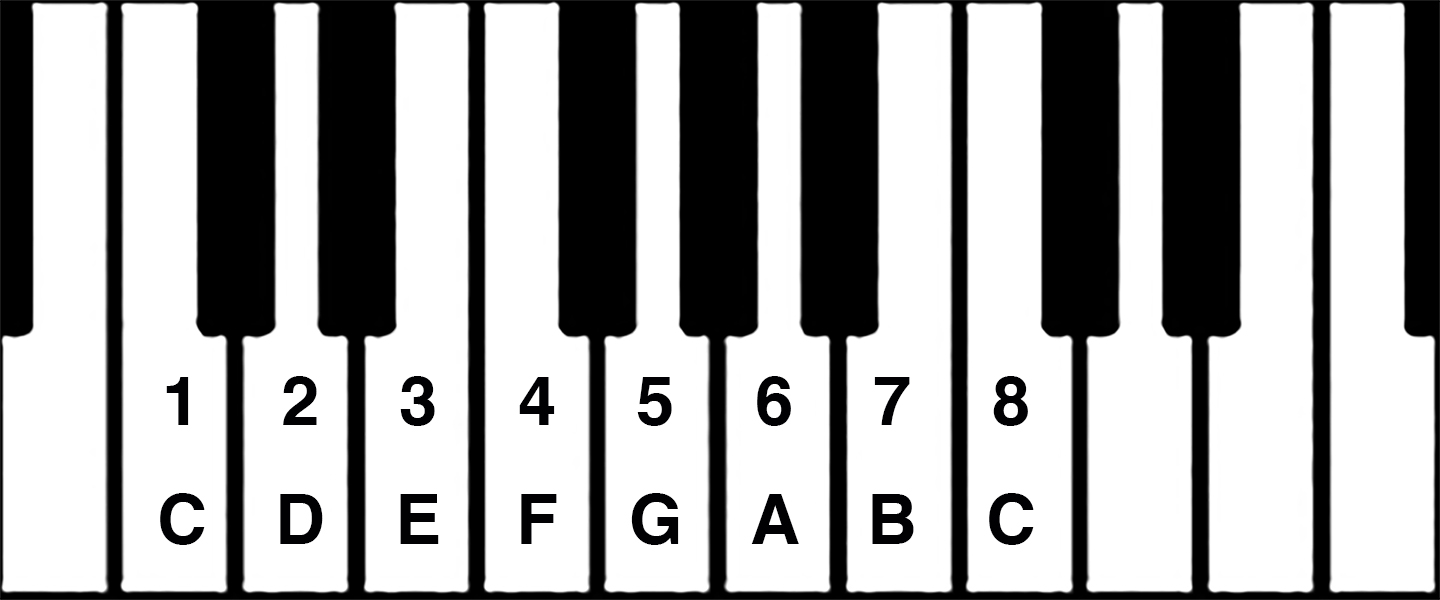THE C MAJOR SCALE (KEYBOARD)
Below, we can see the notes of the C major scale on the standard keyboard.

HOSTS-Jeremy Burns
GENRE-Music Theory
DURATION- 9:00
BUMPER MUSIC- "String Quartet in Modes- Dorian" (Matthew Scott Phillips)
ANNOUNCER- Mike Cunliffe
This, our first theory podcast, is elementary but crucial. In this episode, part 1 of a 2 part series, we will have a brief discussion on melody and harmony. We will also touch on scales, intervals and triads. In part 2, we will cover rhythm.
Below, we can see the notes of the C major scale on the standard keyboard.

Below, we can see the notes of the C major scale writen in standard notation.
On top of the staff, see where we have applied numbers to the scale degrees (C=1, D=2, E=3, etc..).

Here is a simple melody we came up with.
Again, we will show the scale degree letters (on the bottom) and the scale degrees (on the top).

Here is the same C major scale with an added harmony of a 3rd. Notice the collection of pitches that follow above the scale, in parallel motion, as it rises and falls again. These two melodies, together, create a HARMONY. In this case, the harmony is that of a THIRD.

An INTERVAL, the distance between two notes, is the most basic harmonic element. Add a thrid note, and you have a CHORD. The examples, "INTERVAL", in measure 1 and "CHORD" in measure 2 are both played in "block form" (all the notes simultaneously).The ARPEGGIO, seen in measure 3, is when a chord is played out with all the notes in succession (on after another).

Here is our melody with a harmony based on the interval of a 3rd. Again, notice how these melodies move together. These two melodies, together, create a HARMONY. In this case, the harmony is mainly based on the interval of a THIRD, although there are a few FOURTHS in measure 2.

Listen to how this melody sounds when accompanied by the chords C major and G major.

Now listen to how this melody sounds accompanied by the chords C major, E minor, G major and A minor.
